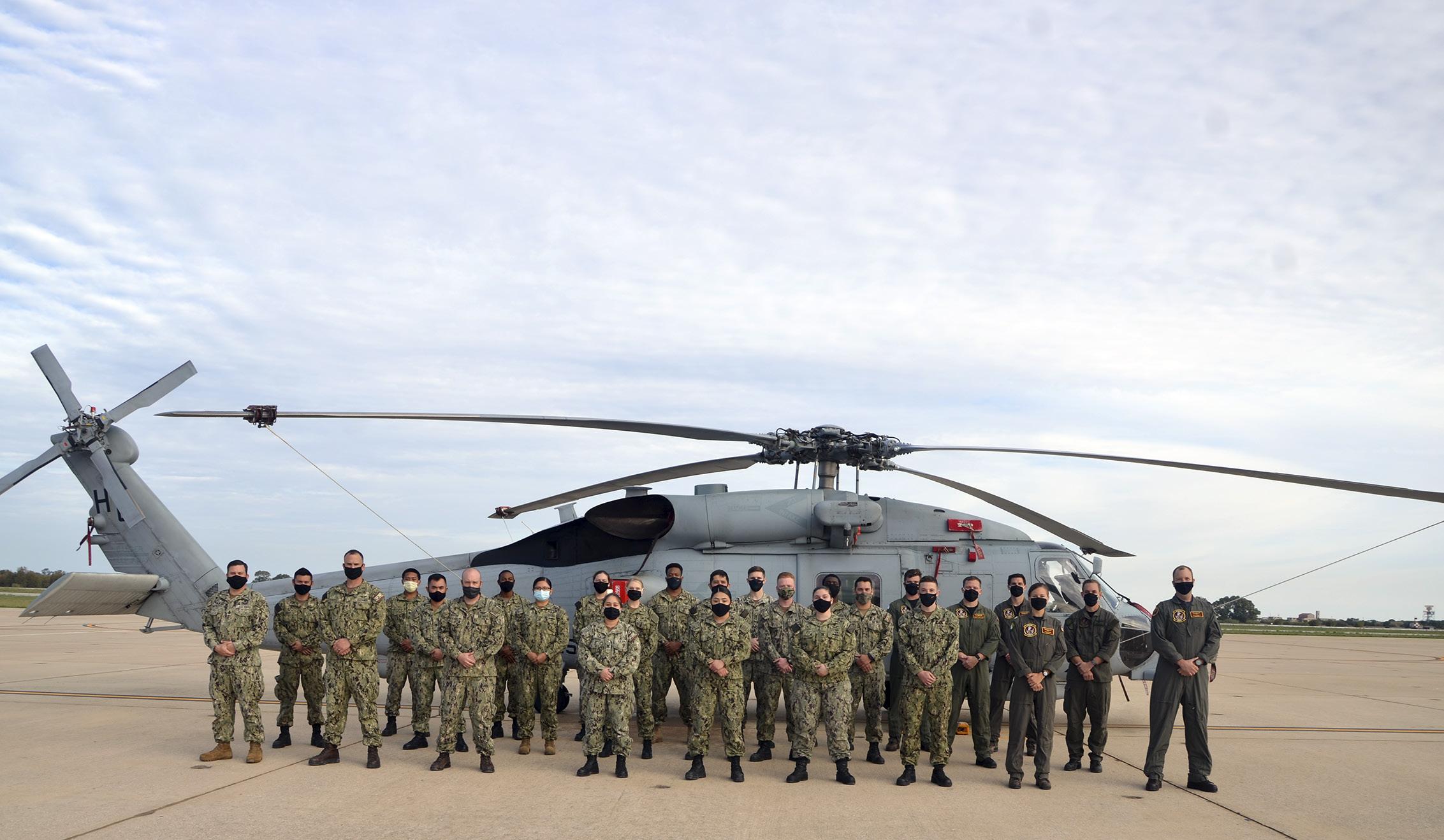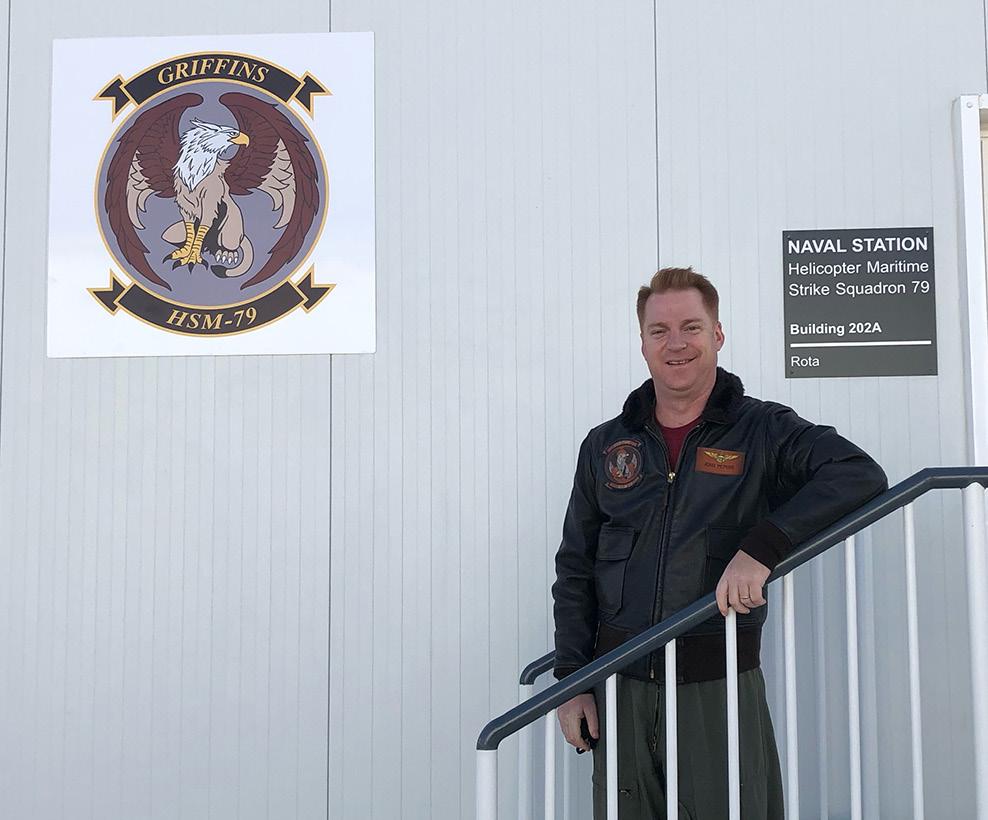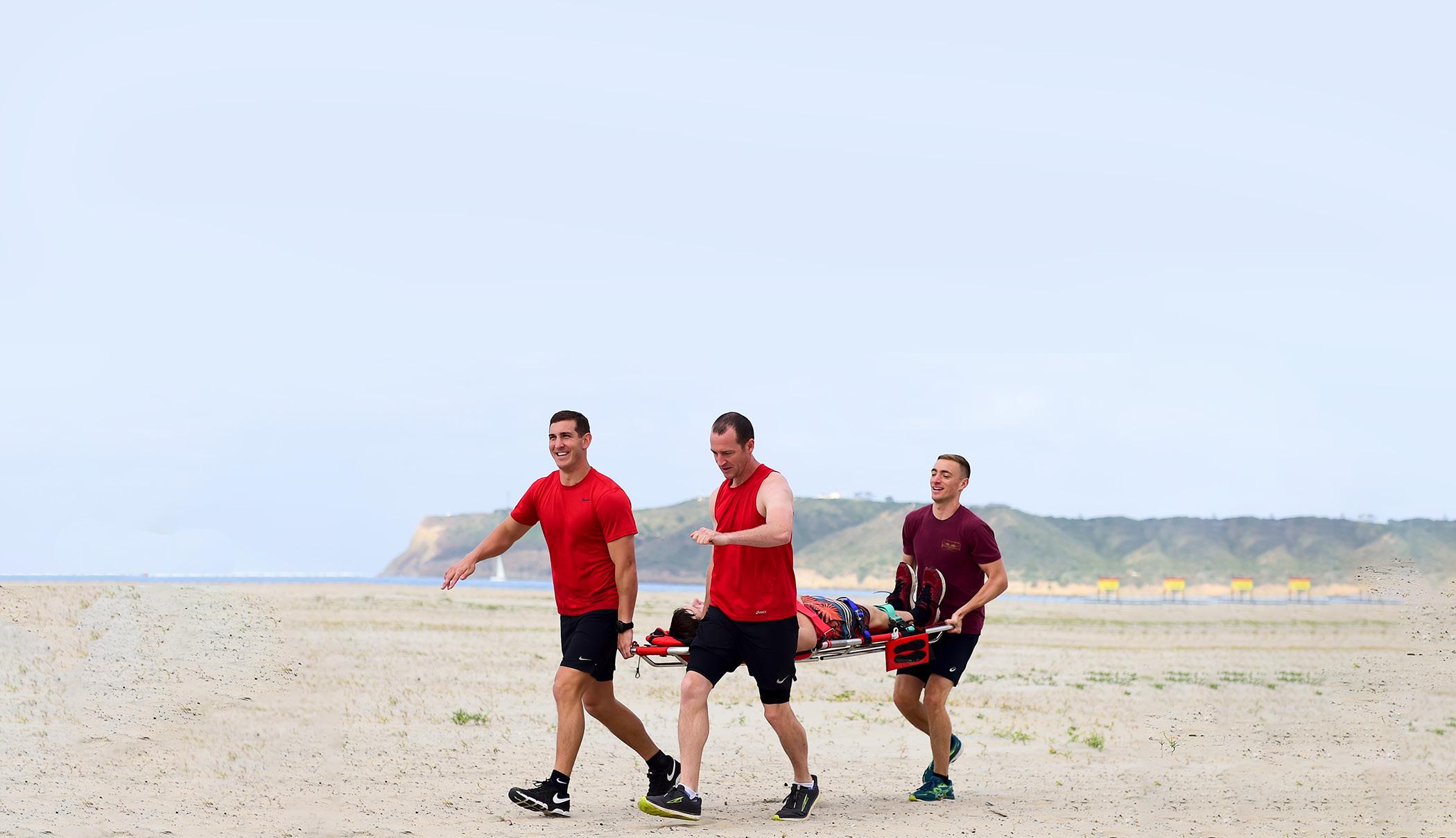
5 minute read
Building the Plane While Flying It: Naval Aviation’s Return to Rota
By LT Meg “Magic” Snyder and LT Ben “Kimbo” Weaver
When you report to a new squadron, you normally have some idea of what you are getting into. Whether it’s a familiar face in the ready room or the squadron’s reputation, there is usually something to gage expectations. We did not have that luxury in October 2020.
We were the first pilots to PCS from HSM-79 in San Diego to our new home in Rota, Spain. There hadn’t been a permanent Naval Aviation presence in Rota in decades, and it showed on the dilapidated, critter-infested old VP hangar next to our spaces. With three newly delivered trailers and two yet-to-be erected temporary hangars, we were truly starting at square one halfway through our first fleet tour. We had no idea what our workspaces would look like or how we would conduct flight operations on a foreign military’s base. When we stepped onto the tarmac at Base Naval de Rota, everything was uncharted territory.
We knew we had many challenges in front of us, but we had no idea of the depth and breadth of obstacles we’d have to overcome just to start flying area fam flights. We had to work through near-zero existing infrastructure, there was no one to pass down the gouge, and we had to figure all of this out during the COVID pandemic. Talk about a reallife leadership laboratory. Sailors of all ranks have had to be creative and flexible in order to overcome everything from lack of commercial international flights, to one grounding point in the hangar, to missing a screw on an aircraft, and do it all safely. Every step of the way our team members have endured and lifted each other up during difficult professional and personal times. The decisions we make together, the precedents we set, and the relationships we build will pave the generations of Griffins to come.
When we first arrived in Rota, our squadron didn’t have an aircraft to our name. After over a month without a helicopter, we were able to acquire one from a detachment from HSM48. Shortly after that we received two more helicopters via C-17, with an additional pair scheduled to come over on a DDG this summer. We’ll eventually grow to nine aircraft by 2022. Logistically, everything is more difficult and simply takes longer. We never imagined what it would be like to have a slower supply chain. We have been fortunate to be stationed, up until now, in a major fleet concentration area in San Diego and deployed to Fifth Fleet which has been the central war effort for our whole lives. Those areas have a welloiled logistics machine that coordinates military operations as efficiently as realistically possible. Needless to say, we were spoiled and didn’t even know it. Shipments to Rota have to go through other hubs which can create significant delays to getting our aircraft up.

Our experience has been exhilarating and eye opening. We are fortunate to have this opportunity to recognize the effort and organization that allows us to do our job. The infrastructure supporting an aviation squadron often goes unnoticed and unappreciated by pilots when the system is firmly established and running smoothly. After all, our mission is to fly the aircraft, but there are so many factors that go into making that possible. Going on eight months here in Spain, we now have three aircraft, two tent hangars, and trailers for offices. We started with about 30 people and now we have 70 including a detachment deployed aboard USS Roosevelt (DDG 80). We have grown so much and we have only just begun.
HSM-79’s 2019 deployment was on USS Abraham Lincoln (CVN 72) as a component of a Carrier Air Wing, but in Spain we will deploy on Arleigh Burke-class destroyers. In addition to an international move and global pandemic, our squadron is adapting to the expeditionary organizational structure. We are the primary aviation stakeholder because we are the only one. Expeditionary squadrons must ensure each of their detachments has the appropriate composition of personnel and qualifications prior to deployment. We have additionally needed to figure out how we could amass the correct number of usable aircraft and necessary parts to conduct qualification flights and deploy.
We are excited to pave a new path for maritime strike helicopters in Sixth Fleet. Not many pilots have the opportunity to make history on their first sea tour. Our experience preparing the detachment for deployment has been awe-inspiring as we have been exposed to the very fabric of what makes Naval Aviation excellent: the hardworking, versatile Sailors that live for the challenge. We are deeply moved to be an element of a global support network reestablishing Naval Aviation in Rota.


The 2021 Aircrew Challenge
When: Wednesday, October 6, 2021 800-1430 Where: Breakers Beach onboard NASNI and Heritage Park Who to Call: AWRC Ian Carpenito - imcarpenito@gmail.com AWSC Tony Chavez - staystrong6715@gmail.com AWSC Clay Cantwell - claycantwell@gmail.com
There is a $5 registration fee for challengers.










